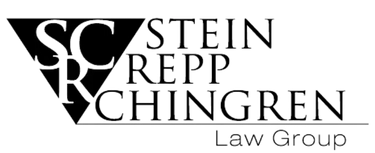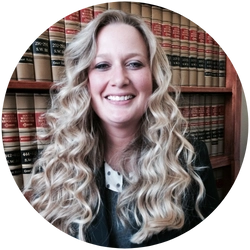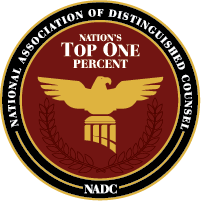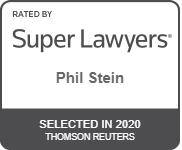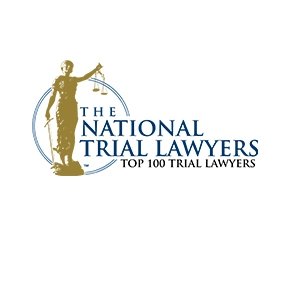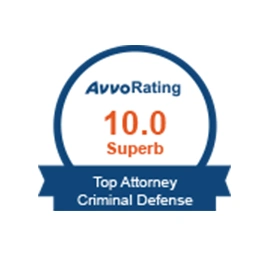SRC Law Group: Slip-and-Fall Accident Specialists
Jump to Section
What is a Slip-and-Fall Accident?
Why is it a Concern in Kansas City?
Potential Seriousness of These Accidents
1. Physical Injuries
Broken bones, especially wrists, hips, or ankles.
Sprains and strains, which might seem minor initially but can lead to chronic pain.
Head injuries, including concussions or even traumatic brain injuries.
Cuts, bruises, and abrasions which can lead to infections or scars.
2. Financial Strain
Medical bills, which can mount rapidly especially if ongoing treatment or surgery is required.
Lost wages due to time off work for recovery.
Costs of rehabilitation or physical therapy.
3. Emotional and Psychological Impact
Trauma from the accident, leading to anxiety or depression.
Fear of revisiting places similar to where the accident occurred.
Reduced quality of life, especially if the injury leads to long-term disability.
Considering these potential repercussions, it's clear that slip-and-fall accidents are not just minor incidents but can profoundly impact an individual's life. Kansas City residents and visitors alike should be aware of their rights and the responsibility of property owners to maintain safe premises.
What Constitutes a Slip-and-Fall Accident?
Definition of a Slip-and-Fall Accident
Scenarios That Qualify as a Slip-and-Fall Accident
Definition of a Slip-and-Fall Accident
Scenarios That Qualify as a Slip-and-Fall Accident
Slippery Surfaces
Wet floors from recent cleaning or spills without proper signage.
Icy or snowy walkways that haven't been adequately cleared or salted.
Trip Hazards
Cluttered aisles in a store.
Electrical cords or wires stretched across walkways.
Uneven or damaged sidewalks.
Poor Lighting
Stairwells or hallways that are dimly lit, making it hard to see potential hazards.
Parking lots without adequate lighting at night.
Structural Defects
Broken or uneven stair treads.
Missing handrails on staircases.
Potholes in parking lots.
Flooring Issues
Loose floorboards or tiles.
Torn or bulging areas of carpet.
Transition areas between different types of flooring without clear markings.
Other Environmental Factors
Accumulated leaves or debris on walkways.
Absence of mats or rugs in entrance areas during rain or snow.
Not All Falls Lead to Legal Liability
It's crucial to understand that not every fall will result in a property owner being held liable. For a legal claim to arise, the property owner or possessor generally must have been negligent in some way, and that negligence must have directly led to the injury. This often means that:
The property owner or an employee must have caused the spill or dangerous surface.
The property owner or an employee knew of the dangerous condition but did nothing about it.
The condition existed for such a length of time that the owner or employee should have discovered and corrected it before the accident occurred.
Understanding these scenarios and the conditions under which legal liability is established is essential for those who believe they might have a claim. When in doubt, seeking the expertise of legal professionals, like the team at SRC Law Group, can provide clarity.
Determining Liability
Duty of Care Explained
Every property owner has a "duty of care" towards visitors. But what does this mean?
Definition: Duty of care refers to the responsibility property owners and managers have to maintain a reasonably safe environment for those who enter. This means taking proactive measures to ensure there are no dangerous conditions that could lead to an injury.
Standard of Care: The specific standard of care may vary depending on the relationship between the visitor and the property owner. There are typically three classifications:
-
Invitee: Someone invited onto a property for business purposes, like a customer in a store. They are owed the highest level of care.
-
Licensee: Someone on the property for non-business purposes, like a social guest. Property owners must warn licensees of known dangers.
-
Trespasser: Someone who isn't permitted to be on the property. Typically, property owners owe the least duty of care to trespassers, except when it involves children.
When is a Property Owner at Fault?
A property owner might be held liable for a slip-and-fall accident if:
Creation of Hazard: The owner or an employee must have created the condition leading to the accident.
Knowledge of Hazard: The owner or employee knew about the dangerous condition but did nothing to address it.
Reasonable Knowledge: The condition was present long enough that the owner or employee should reasonably have discovered and addressed it.
Failure to Warn: There was no warning sign or barrier indicating the danger.
Circumstances Where Liability Might Be Shared:
In some cases, both the property owner and the injured person may share responsibility. This is known as "comparative negligence." Here's how it might play out:
Contributory Negligence: Some jurisdictions hold that if the injured party contributed in any way to the accident (e.g., not paying attention to their surroundings), they may not be entitled to any compensation.
Percentage of Fault: In other jurisdictions, the fault might be divided as percentages between parties. For instance, if the injured party was found to be 30% at fault, they might only recover 70% of the damages.
Awareness of the Hazard: If it's proven that the injured individual was aware of the hazardous condition but chose to proceed anyway, their compensation might be reduced.
Inappropriate Footwear: If the footwear of the injured party contributed to the fall, it might reduce their claim, especially if warning signs about specific footwear were displayed.
Trespassing: If the injured party was not supposed to be on the property or in a specific area of it, their ability to claim might be reduced or nullified.
Understanding the nuances of liability is crucial when pursuing a slip-and-fall case. Consulting with legal professionals can shed light on the intricate dynamics of liability and help victims understand where they stand.
Your Legal Rights After a Slip-and-Fall Accident
1. Right to Seek Compensation
If you've been injured due to the negligence of a property owner or manager, you have the right to seek compensation for your injuries and other damages. This can include:
Medical Expenses: Bills for hospital stays, surgeries, physical therapy, prescriptions, and any other medical treatments related to the injury.
Lost Wages: Compensation for the time you've had to take off work due to your injuries.
Pain and Suffering: This might be more intangible, but the physical pain and emotional distress from your accident are compensable damages.
Future Costs: If your injury will require ongoing medical care or will impact your earning capacity in the future, you may be entitled to compensation for these anticipated costs.
Punitive Damages: In cases where the property owner's behavior was especially egregious or reckless, you may be awarded punitive damages as a way to punish the wrongdoer and deter similar conduct in the future.
2. Importance of Seeking Medical Attention
Even if you feel fine immediately after the accident, it's critical to seek medical attention. Here's why:
Documenting Injuries: A medical examination will provide records of your injuries, which can be pivotal in a legal claim.
Uncovering Hidden Injuries: Some injuries, like concussions or internal bleeding, may not manifest symptoms immediately but can be serious or even life-threatening.
Establishing a Link: Seeking immediate medical attention helps establish a direct link between the accident and your injuries. Waiting too long might give insurers or property owners a chance to argue that something else caused your injuries.
3. Your Right to Legal Representation
You have the right to legal counsel. No one should face the aftermath of a slip-and-fall accident alone, especially when dealing with insurance companies or property owners. Here's what you should know about your right to legal representation:
Consultation: Most personal injury attorneys offer free consultations. This allows you to understand the viability of your case without financial commitment.
No Upfront Fees: Many attorneys work on a contingency fee basis. This means you don't pay anything unless you win your case.
Expert Guidance: Lawyers can help gather evidence, negotiate with insurance companies, and represent you in court, ensuring your best interests are always front and center.
Knowing the Law: Slip-and-fall laws can be complex and may vary from state to state. A skilled attorney can navigate these complexities, ensuring that your rights are fully protected.
Maximizing Compensation: An attorney can help you understand the full scope of your damages and fight to get you the maximum compensation possible.
Navigating the aftermath of a slip-and-fall accident can be challenging, but you're not powerless. By understanding your rights and acting swiftly, you can ensure that you're in the best position to recover both physically and financially. Always remember, while the legal process can seem daunting, it's there to protect and aid victims in regaining their footing after such incidents.
The Importance of Gathering Evidence
Why is Gathering Evidence Essential?
-
Establishing Fault: Proper evidence can solidify your claim that the property owner's negligence led to your injury.
-
Determining the Severity: The evidence can showcase the extent of your injuries and the potential long-term impact on your life.
-
Facilitating Legal Proceedings: Adequate evidence can speed up legal procedures, negotiations, and can be the difference between a successful claim and an unsuccessful one.
Types of Essential Evidence
-
Photographic Evidence
-
Scene of the Accident: Snap pictures of the exact location where you fell. This can include any visible hazards like wet floors, broken tiles, or icy patches.
-
Immediate Injuries: While not always pleasant, photographs of your injuries shortly after the accident can be compelling evidence of the accident's severity.
-
Changes Over Time: Injuries can evolve. A bruise might deepen in color; swelling might increase. Periodic photos can document the progression of your injuries.
-
Property Conditions: If there were any contributing factors like poor lighting, lack of handrails, or missing warning signs, capture them in photos.
2.Witness Accounts
-
Names and Contact Information: Gather names, addresses, and phone numbers of anyone who witnessed the accident. They can provide an unbiased account of what transpired.
-
Immediate Statements: If possible, take a quick video or audio recording of witnesses describing what they saw. Their immediate reactions can be more vivid and accurate than recollections weeks or months later.
-
Follow-Up: Reconnect with witnesses after a few days. They might remember additional details or have noticed recurring hazards in the same location on different days.
3. Documentation
-
Incident Reports: If your fall took place in a store, apartment complex, or any other commercial location, there might be an official incident report. Request a copy immediately. Some establishments might be reluctant, but having this is crucial. It's an official acknowledgment that the incident occurred.
-
Medical Records: Always keep a detailed account of all medical procedures, consultations, and medications related to your injury. This not only establishes the direct link between the accident and your injuries but also determines the financial costs involved.
-
Personal Notes: Document your personal experiences. How do you feel each day? Are there activities you can no longer do because of the accident? This can be essential when claiming non-economic damages like pain and suffering.
Steps to Take After a Slip-and-Fall Accident
1. Seek Medical Attention
Immediate Concern: Your health should always be the top priority. Some injuries may not manifest immediate symptoms, such as concussions or internal injuries, making timely medical attention paramount.
Documentation: When visiting a healthcare professional, they will create a record of your injuries. This serves as evidence, establishing a clear link between the accident and the injuries sustained.
Follow-up Care: If you're given specific instructions for follow-up care or additional medical consultations, ensure you adhere to them. This shows the ongoing nature of your injuries and can influence the value of your claim.
2. Report the Accident
To Management or Property Owner: If your accident occurred in a commercial establishment or residential building, it's essential to report it to the management or property owner as soon as possible.
Incident Report: Request that an official report be made, and obtain a copy for your records. This document can serve as evidence that the accident occurred in the specified location and under the given circumstances.
Note the Response: Record the reaction and statements made by the personnel or property owner when you report the incident. This can be relevant if there are disputes later.
3. Gather Evidence
Photographic Proof: Take photos of the exact spot you fell, the surrounding area, and any visible injuries. If there were contributing hazards such as spilled liquids, uneven flooring, or icy patches, make sure they're clearly captured.
Witness Information: If there were any witnesses, gather their names, contact details, and a brief statement of what they saw. Witnesses can provide an impartial account of the incident.
Keep Damaged Items: If any personal belongings, like clothing or glasses, were damaged during the fall, preserve them. They can serve as evidence of the accident's impact.
4. Consult with a Lawyer
Specialized Expertise: Seek out a lawyer with experience in slip-and-fall or personal injury cases. They can offer guidance tailored to your situation.
Evaluation: A lawyer can assess the strength of your case, estimate potential compensation, and inform you of the best course of action to take.
Representation: If you decide to pursue a claim, a lawyer will be instrumental in gathering further evidence, negotiating with insurance companies or opposing parties, and representing your interests in court if necessary.
Fee Structures: Most personal injury attorneys operate on a contingency fee basis. This means you don't pay them unless you win your case. It's essential to understand any fee structures and potential costs upfront.
